If you live with a dog, you probably notice that lingering dog smell around the house. It’s pretty common, but honestly, you don’t have to just accept it.
You can get rid of dog odor in your home by keeping things clean, airing out rooms, and using a few simple tricks.
Dog odors usually come from a mix of your pet’s skin, fur, and the spots where they hang out the most. If you pay attention to where the smell is strongest, you can start to control those unwanted pet odors and keep things fresher.
No time to read this now?
Click here to save this idea for later!
↓↓↓↓↓
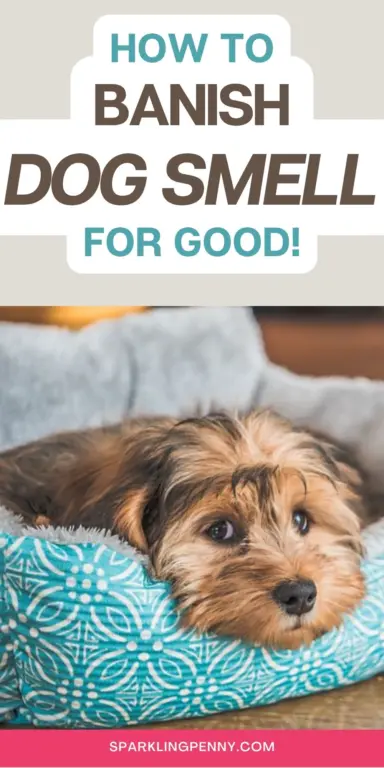
Heads up: I sometimes use affiliate links. When you click these links and make a purchase, I may get a small commission. It won’t cost you anything but it helps me to run this site.
Common Causes of Pet Odor
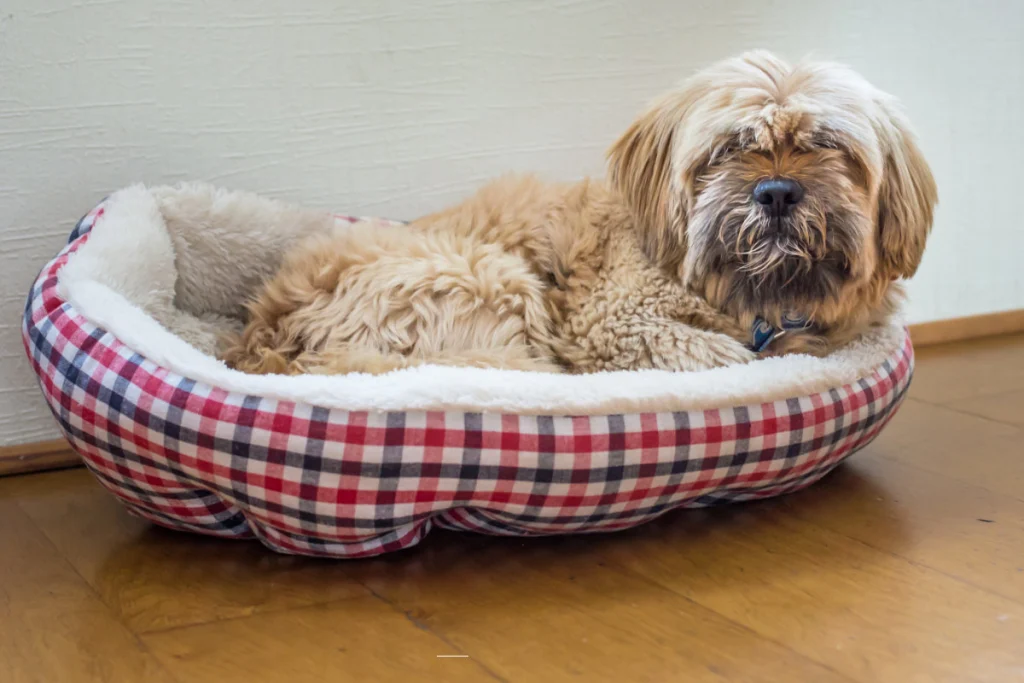
Dog smell comes from a bunch of places. Most dogs have skin oils that can get pretty strong, especially after they get wet.
Sweaty paws and the natural bacteria on their coat don’t help either. If your dog loves rolling around outside, expect them to bring in smells from the yard or, let’s be honest, whatever gross thing they found.
Old saliva on toys, collars, or bedding just makes it even worse. Skip baths or brushing, and that smell will get even stronger.
Sometimes health issues like skin infections, dental disease, or dirty ears can crank up the stink, too. If you are worried, I recommend you see your vet in the first instance.
Pet hair and dander cling to pretty much every fabric in your home—couches, rugs, clothes, you name it. Dander is just tiny flakes of skin, but when it settles into carpet or cloth, it traps dog smells for ages.
Loose hair and dander attract dust and other junk, making it even tougher to get rid of the odor. When you vacuum or clean, you might stir up those flakes and spread the smell unless you’re thorough.
Brushing your dog daily and using a HEPA filter vacuum really help get rid of dander and hair before things get out of hand.
Your Cleaning To Do List
If you want to keep your home free of dog smell, you need to stay on top of daily cleaning. Focus on carpets, bedding, toys, and surfaces—it really changes how your house smells, even with pets.
1. Vacuuming Floors and Carpets
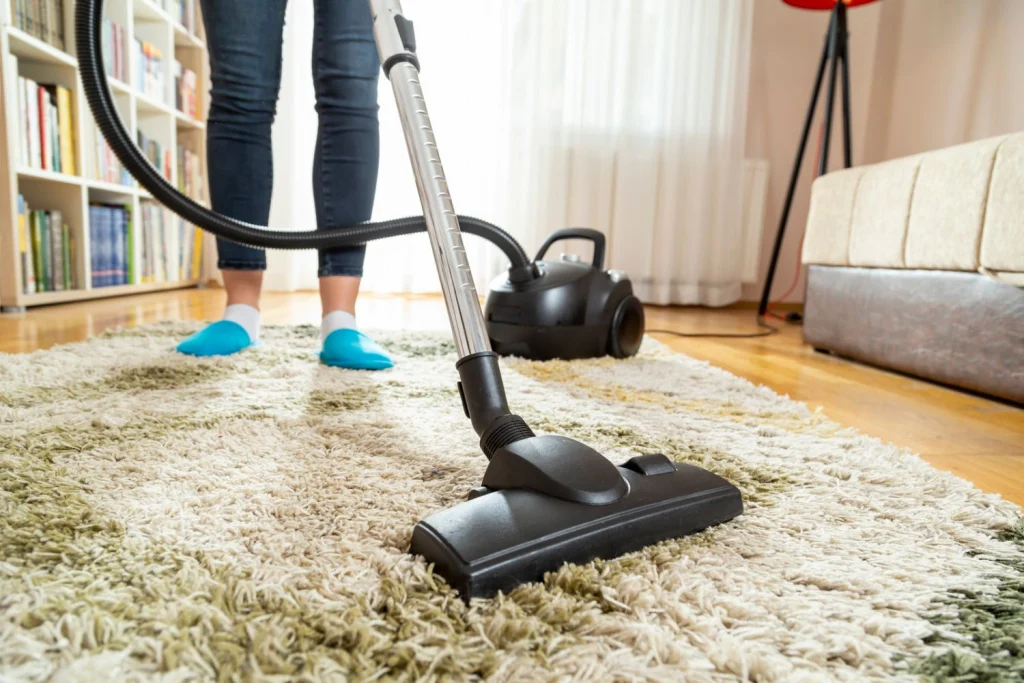
Vacuuming is your best friend when it comes to pet odor. Dogs shed hair and dander that get stuck in carpets and rugs, and it builds up fast.
Vacuuming every day or every other day makes a big difference. Grab a vacuum with a HEPA filter—it traps more dander and small stuff.
Hit the corners, under furniture, and your dog’s favorite napping spots. Empty the vacuum canister or swap out bags often, since a full vacuum just spits odors back out.
For deep cleaning, I set aside time once or twice a month for cleaning carpets with an enzyme cleaner. That helps break down odor-causing stains regular vacuuming can’t touch.
2. Washing Dog Bedding and Toys
Dog bedding grabs fur, skin flakes, and smells. I recommend washing your dog’s bed every week, or more if your dog sheds a lot or is always outside.
Use hot water and a pet-safe detergent for dog beds, blankets, and soft toys. Dry bedding completely before putting it back—otherwise, it just gets musty.
Hard toys need regular cleaning, too. Most rubber or plastic toys can go on the dishwasher’s top rack (skip the heat dry), or you can scrub them in warm, soapy water.
Make a cleaning schedule so you don’t forget. I like to clean bedding and toys at the end of each week, so everything feels fresh when Monday rolls around.
3. Wiping Down Surfaces and Furniture
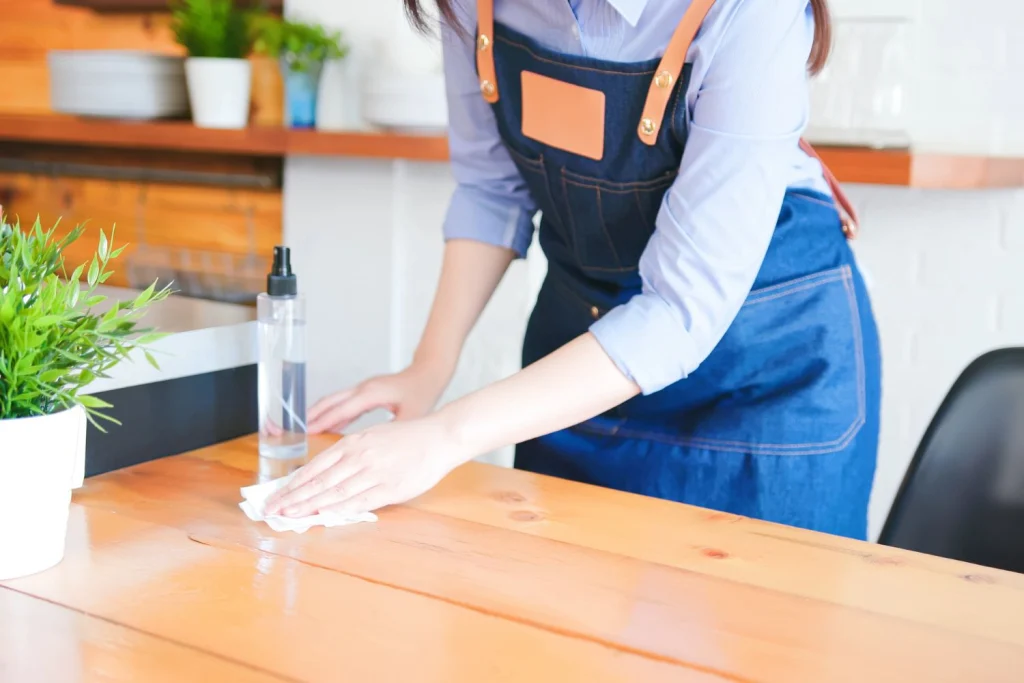
Dog fur and dirt land on couches, tables, and even walls way faster than you’d think. Use a damp microfiber cloth to wipe down surfaces your dog touches every day.
For upholstered furniture, a lint roller or handheld vacuum grabs loose hair. For stains or smells, spray a pet-safe fabric cleaner and blot with a clean rag.
I wipe down door frames, baseboards, and spots near food and water bowls. It stops the smell from spreading and keeps things looking tidy.
If your dog is allowed on the couch or bed, wash those covers weekly. Washable slipcovers make quick cleaning so much easier.
Banishing The Smell
Getting rid of dog smell at home comes down to using the right cleaning products, absorbing odors with safe natural stuff, and making sure hidden places like carpets and beds don’t get musty. Simple methods and regular routines really do the trick.
Enzymatic and Vinegar-Based Cleaners
Nature’s Miracle Stain And Odor Remover Dog 1.33 Gallons, Odor Control Formula, AccuShot Sprayer Refill 170 fl oz, Tough on Dog Urine, Feces, Vomit, Drool and Other Organic Stains and Odors
Enzyme cleaners break down the molecules that actually cause bad smells, not just cover them up. If your dog has an accident on the floor or carpet, grab an enzymatic cleaner to get rid of every trace of odor.
You can find these at most pet stores, and they work well on stains from urine, feces, or vomit. For daily cleaning, use a vinegar solution—just mix equal parts white vinegar and water in a spray bottle. Spray on pet spots or wipe floors with a vinegar-based cleaner.
Both enzyme cleaners and vinegar are safe for most surfaces and fine to use around dogs. Let the area dry out before letting your pet back in. The smell is mild and fades pretty fast.
Natural Odor Absorbers
Natural odor absorbers help keep the air fresh without harsh chemicals. I always keep an open box of baking soda in each room where my dog hangs out—baking soda is great at pulling smells out of the air and soft surfaces.
Sprinkle baking soda on carpets, let it sit for 30 minutes, then vacuum it up to get rid of lingering smells. Activated charcoal in small bags is another solid natural deodorizer for rooms, closets, or near pet beds.
Just keep these out of your dog’s reach, especially if your dog likes to chew on things. And don’t forget fresh air—open windows as much as you can to let bad smells escape and keep things from getting stuffy.
Can’t get motivated?
#10 works every time I use it!
Deep Cleaning Carpets and Upholstery
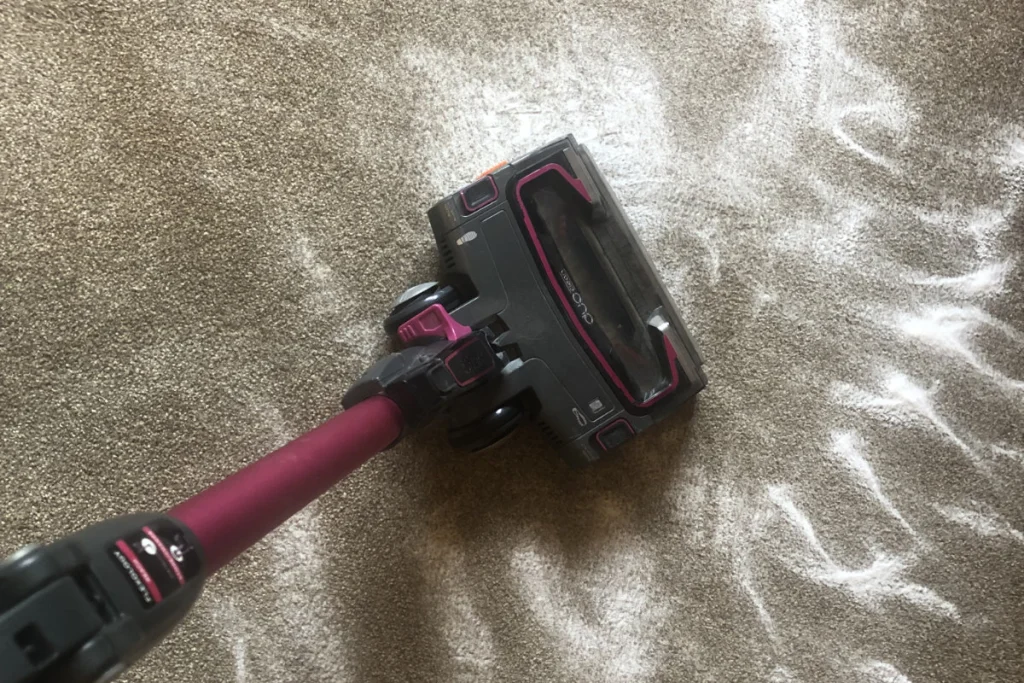
Dog smells love to settle into carpets, rugs, couches, and pet bedding. To deep clean, start by vacuuming thoroughly to grab hair and dirt. That alone helps more than you’d think.
If the smell sticks around, use a carpet cleaner made for pets or rent a steam cleaner. After washing, sprinkle baking soda over the area, let it sit overnight, and vacuum it up in the morning.
For fabric couches or chairs, use enzyme sprays made for upholstery. Always wash your dog’s bedding in hot water with laundry detergent, and add a cup of white vinegar for extra odor removal.
Make sure bedding dries all the way—otherwise, you’re just trading one smell for another.
Deodorizing Sprays for Quick Freshness
Sometimes you need to kick out dog smell fast, like before guests show up. Deodorizing sprays are perfect for this. You can buy sprays made for pet odors—they use natural ingredients to neutralize smells, not just cover them up.
TropiClean Dog Perfume, Long Lasting Papaya Cologne, Deodorizing Spray for Smelly Dogs, After Bath Detangling Spray with Vitamin E, Safe for Cats, 8oz.
To make your own deodorizing spray, mix 1 cup of water with a few drops of lavender or lemon essential oil in a spray bottle. Lightly mist furniture, curtains, and dog beds.
Always spot test first, especially with homemade sprays, and never spray your dog directly. Keep a bottle of deodorizer by the door or in your cleaning kit for quick touch-ups.
Improving Air Freshness
Getting rid of dog smell isn’t just about cleaning—it’s also about keeping the air fresh. The right mix of airflow, smart tools, and simple odor control will make your home smell so much better.
Maximizing Ventilation and Fresh Air
Letting in fresh air is honestly one of the best ways to keep dog smells from taking over. Open doors and windows often, even if it’s just for a little while.
This moves stale air outside and brings in something new. If you’ve got ceiling fans or window fans, run them to boost air movement.
Use exhaust fans in bathrooms and kitchens, too. The more you move the air, the less those stubborn scents stick around.
Try airing out bedding, rugs, and any soft surfaces your dog loves. Hanging things outside for even an hour can make a huge difference. It’s such a simple step, but it really helps keep your rooms and fabrics smelling fresh.
Choosing the Best Air Purifiers
Air purifiers really help if you want clean, fresh-smelling air. For homes with dogs, a HEPA air purifier works best.
WINIX AM90 Air Purifier for Home Large Room Up to 1740 Ft² in 1 Hr With Air Quality Monitor, True HEPA, Carbon Filter and Auto Mode, Captures Pet Allergies, Smoke, Dust
HEPA filters grab tiny bits of hair, dander, and allergens floating around. Look for models with a special carbon or charcoal filter—these do a great job at trapping smells.
Some air purifiers list the room size they’re made for, so double-check you get one big enough for your main living area. I’d say don’t skimp here—go for a bigger size if you’re unsure.
Keep your air purifier running, especially if your dog sheds a lot. Put it where your dog hangs out most, not hidden away in a corner.
Stay on top of filter changes and cleaning, as the manufacturer suggests. That’s honestly the only way to keep things working right.
How Activated Charcoal Absorbs Odors
Activated charcoal acts like a magnet for smells. You don’t need to plug it in or use batteries—just set out bags or bowls of it near pet beds, crates, or spots where odors seem to linger.
PurifyLogix Activated Charcoal Odor Absorber Bags Compatible with OKSOTY Stainless Steel Cat Litter Box, Natural Coconut shell Charcoal Bags, Absorb Odors/Control Damp from Pets/Keep Home Fresh(6PCS)
The magic’s in the charcoal’s tiny pores. They trap odor molecules and keep them from floating around your home.
Swap out or refresh the charcoal every few months to keep it working. Some brands sell odor-absorbing pouches made just for pet areas.
This simple, low-effort trick can cut down on smells and keep your house more inviting.
Dog Grooming and Hygiene
Dog odors pile up fast when pets aren’t kept clean. Bathing, trimming, dental care, and ear cleaning all help keep your home smelling better.
Regular Bathing with Dog-Specific Shampoos
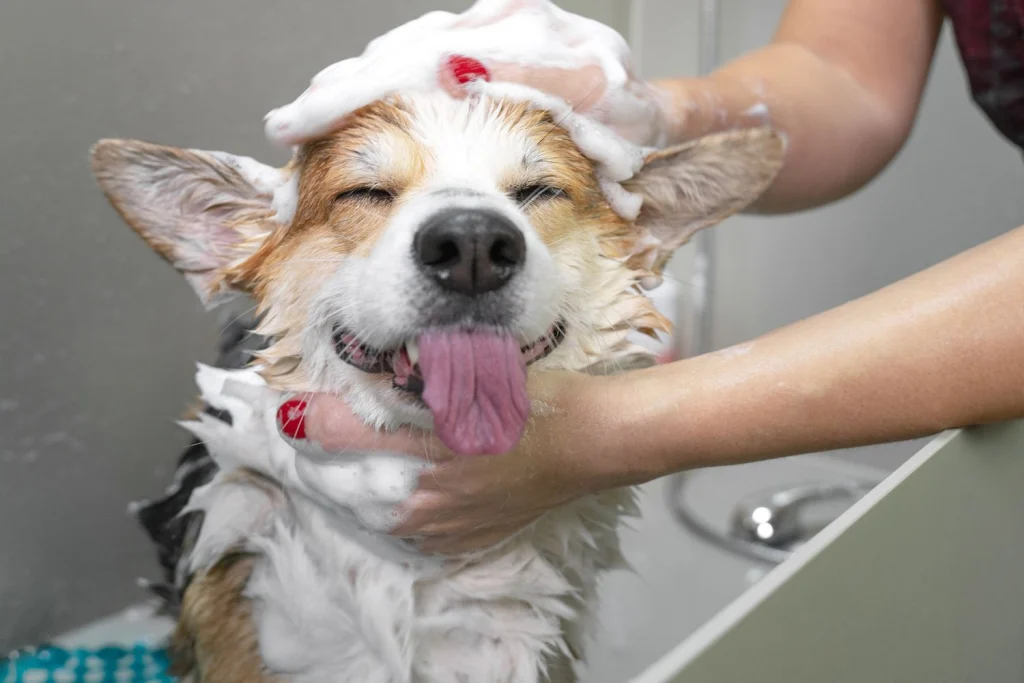
Bathing your dog regularly gets rid of dirt, oils, and bacteria that cause those funky smells. Use a dog-specific shampoo—human shampoos dry out their skin and can make things worse.
Most dogs need a bath about once a month, but some breeds need it more often. After the bath, dry your dog with a towel or use a blow dryer on cool. If fur stays damp, you’ll get that musty smell nobody wants.
Stick to a gentle routine to keep your dog smelling decent.
Tips for Bathing:
- Brush out loose fur before bathing
- Use only lukewarm water
- Rinse all shampoo out to avoid skin irritation
Dental Care and Bad Breath Prevention
Bad breath in dogs usually means their teeth need more attention. Plaque and tartar trap bacteria, which leads to strong smells from the mouth.
Brush your dog’s teeth with toothpaste made for dogs at least a few times a week. You can use a small toothbrush or a finger brush, whatever works.
Dental chews, toys, and healthy treats help keep your dog’s mouth cleaner between brushings. For tough tartar or gum issues, head to your vet for a professional cleaning.
Routine Ear Cleaning
Ears trap dirt, wax, and moisture, which leads to some pretty unpleasant odors. Dogs with floppy ears or lots of hair in their ears have it worse.
Use a vet-recommended ear cleaner to gently clean your dog’s ears every week or two, or just whenever they start looking dirty or oily. To clean, put a few drops of cleaner in the ear, massage gently, and wipe out debris with a soft cloth.
Never use cotton swabs deep inside a dog’s ear. If you notice redness, swelling, or a strong, yeasty smell, call your vet—could be an infection.
Brushing and Regular Grooming
Brushing your dog gets rid of loose fur, dander, and dirt that can carry odors. Most dogs need brushing a few times a week; long-haired breeds may need it daily.
Brushing spreads your dog’s natural oils, which keeps the coat healthy and helps with that wet dog smell. Regular grooming also means trimming hair, cleaning under the paws, and sometimes wiping your dog down with grooming wipes between baths.
Set up a grooming session every month or two for nail trims, haircuts, and a full clean. It’s honestly worth it.
Quick Fixes
Regular cleaning helps reduce odors, but sometimes you want a little something extra. There are safe ways to make your home smell good without bothering your dog.
Essential Oils and Diffusers
You might want to try essential oils, but be careful—some oils are toxic to dogs. Stick to oils known to be safe, like lavender and chamomile.
Never use tea tree, peppermint, or eucalyptus oil around dogs. Use a diffuser in places your dog can’t reach, and always keep the room well-ventilated.
Start with just a few drops of oil in water and don’t leave the diffuser on for too long. Watch your dog for any signs of discomfort, like coughing or sneezing—better safe than sorry.
| Safe Essential Oils | Unsafe for Dogs |
|---|---|
| Lavender | Tea Tree |
| Chamomile | Peppermint |
| Frankincense | Eucalyptus |
Choosing Pet-Friendly Deodorizers
Go for deodorizers made specifically for homes with pets. Try to find natural deodorizers that skip harsh chemicals and fake perfumes.
Baking soda’s a classic—just sprinkle it over carpets or furniture. Wait about 15 minutes, then vacuum it up and you’re good.
PurifyLogix Activated Charcoal Odor Absorber Bags Compatible with OKSOTY Stainless Steel Cat Litter Box, Natural Coconut shell Charcoal Bags, Absorb Odors/Control Damp from Pets/Keep Home Fresh(6PCS)
Activated charcoal bags work well too. Toss them near your dog’s bed or in any room that tends to get a bit musty.
If you’re eyeing air freshener sprays, double-check the label to be sure they’re non-toxic and safe for pets.
Honestly, I’d avoid plug-in air fresheners or anything loaded with strong scents. Those can make your dog sneeze or just feel off.
Stick with products that clearly say they’re safe for animals. It’s just better for everyone at home, really.




